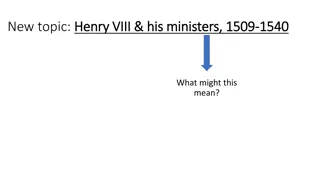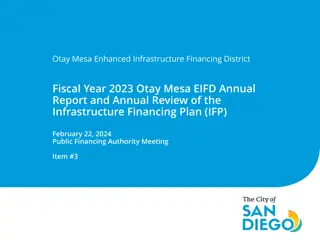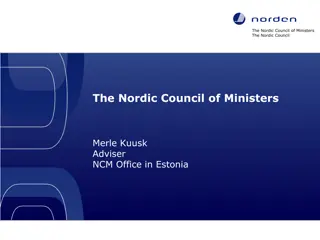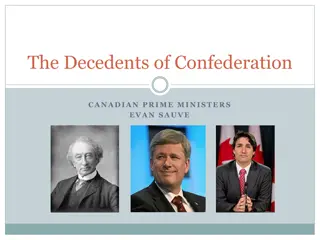
Presbytery Events and Updates - Engage with Church Events and Transitions
Stay informed about upcoming church events and updates, including safety training, systemic racism discussions, and the Board of Pensions changes. Get involved in the General Minister search process and the MDP initiative. Discover valuable insights for church members and staff.
Download Presentation

Please find below an Image/Link to download the presentation.
The content on the website is provided AS IS for your information and personal use only. It may not be sold, licensed, or shared on other websites without obtaining consent from the author. If you encounter any issues during the download, it is possible that the publisher has removed the file from their server.
You are allowed to download the files provided on this website for personal or commercial use, subject to the condition that they are used lawfully. All files are the property of their respective owners.
The content on the website is provided AS IS for your information and personal use only. It may not be sold, licensed, or shared on other websites without obtaining consent from the author.
E N D
Presentation Transcript
General Ministers Report Upcoming Events General Minister Search Update Board of Pensions Update Transition Process Update
Church Safety / Security Training Saturday, October 28 Bethany Presbyterian Church 9 am 4 pm Designed for people who are on the front lines of greeting people and interacting with the public and who work on or with the church building, including ushers, greeters, outreach workers, custodians, and pastors.
Better Than AverageTraining November 2nd, 2023 Beulah Presbyterian Church 4:00 8:30 P.M (optional 2:00 pm keynote)
Intro to Systemic Racism November 3-4th, 2023 via Zoom Designed for people who are on the front lines of greeting people and interacting with the public and who work on or with the church building, including ushers, greeters, outreach workers, custodians, and pastors.
WhatsHappening The MDP is live! You can find it on CLC or the Presbytery Website Search Committee Contacts: Rev. Laura Strauss or Elder Bucky Savatt, Co- Chairs Make suggestions!
Board of Pensions Changes No changes in BOP for 2024 We expect significant changes for 2025 This change will apply to installed positions only We anticipate that only the pastor will be required to be enrolled in the Board of Pensions. Spouse, Dependent, and Family coverage will be available through BOP at a fixed cost, irrespective of effective salary. However, COM has used the structure of installed positions in setting policy for non-installed positions.
Pittsburgh Presbytery Fall 2023 Transition Update and Report A little history, a few insights, and a whole lot of random observations from Brian September 2023
Phase 1: Information Gathering The Landscape Study identified Pittsburgh Presbytery as a recovery quadrant ministry, scoring low in both energy and satisfaction. These systems require a back to basics approach to leadership. At the March EC Retreat (along with a few members of the Special Nominating Committee) took an in-depth look into the role of a Presbytery as defined by the Book of Order and the recent history of the Presbytery These two processes (Landscape and Book of Order review) constituted the primary information-gathering steps for the transition.
Some Definitions The Community - The Presbytery community encompasses the members of the Presbytery and its congregations. The System - The Presbytery system is the structure the Presbytery utilizes to accomplish it s ministry Capacity - The Presbytery s capacity is defined as the resources, human, physical, and financial, that the Presbytery has at its disposal in order to carry out its ministry. The system seeks to support the community, but there is a reciprocal relationship.
Community and Systems in Relationship The community provides the capacity for the system, and the system in turn provides resources and services for the community. In a balanced system, the size of the system is in line with the size of the community and the capacity the community can provide The Community Capacity The System
Example: A Congregation In a congregation, the people provide financial and human resources to the system, which in turn governs and funds operations (including staff, programs, and physical plant) The System then provides goods and services (worship, program opportunities, pastoral care, etc.) to the community. The Community Capacity The System
Communities with Increasing Size In communities where the needs are increasing (more people), the system is often stretched to meet the needs of the community because the system's capacity usually needs to catch up to the size and increased need. However, in this scenario, the community has lower expectations of the system to provide goods and services, and with lower expectations, satisfaction is higher. The Community Expectations Satisfaction The System
Communities with decreasing size In communities where the size is decreasing (fewer people), the community is often stretched to meet the system's needs because it no longer has the capacity it once did. However, in this scenario, the community has higher expectations of the system to provide goods and services, but due to the diminished capacity it can t do what it once did, and therefore satisfaction is lower. The System The Community Expectations Satisfaction
Pittsburgh Presbytery at a Glance Within recent memory, Pittsburgh Presbytery had over 30 staff members, 180 congregations, and over 90000 members. Today we have 7 staff members, 120-ish congregations, and approximately 20000 members Our last re-organization (2011-2012) was a result of the system exceeding its capacity and resulted in a significant reduction in staff. The System The Community Expectations Satisfaction
The Two Most-Recent Models Looking at recent history, the Presbytery system was designed to function in two different ways. Presbytery as Resource - This model, from 1997 to 2012, envisioned the Presbytery system collecting, organizing, and producing resources that then flowed downstream to congregations and individuals. Congregations were organized by size and staffing assigned in a similar pattern Presbytery as Connector - From 2013 through the present, this model envisioned the Presbytery system as the center of a wheel, connecting the various spokes as a means of peer-resourcing, and was based heavily on the branch system. Congregations were organized by geography, and staffing was assigned in a similar pattern.
Observations on the Present System The re-organization of the Presbytery envisioned fewer large meetings, with the bulk of the connecting and equipping work of the Presbytery occurring within regular branch meetings. The branch system initially generated a fair amount of energy, but that energy dissipated over time, and ultimately branch-level activity slowly faded out. No branch survived a change in staff person without a significant (if not total) loss in momentum. We have, as opportunities have arisen, sought to decrease our staff size.
Staffing Configuration 2016 2023 General Minister 1.0 General Minister 1.0 Stated Clerk 0.75 Stated Clerk 1.0 Associate Minister 3.0 Associate Minister 2.0 Business Administrator 1.0 Business Administrator 1.0 Financial Administrator 1.0 Support Staff 2.0 Support Staff 3.0 Custodian 0.5 Custodian 0.5 Total 10.25 Total 7.5
Part 2: So what did we learn from Landscape?
Recovery Quadrant Low Energy, Low Satisfaction We scored in approximately the 10th percentile in energy (H: 17, M: 55, L: 29) We scored in the 3rd percentile in satisfaction (H: 18, M: 49, L:33) We were trending downward in satisfaction (Weaker: 51, Same: 36, Stronger: 13)
Four Primary Drivers If this is done well, satisfaction will increase Shared Vision: Our Presbytery leadership has done a good job of developing a shared vision that unites us. Involvement: Members have discovered that involvement in the work of our Presbytery can be a source of energy and spiritual renewal. Effective Communication: As a Presbytery we do a good job communicating with one another in a way that keeps us aware and engaged. Vital Congregations: Our Presbytery has been successful in helping congregations like mine become more vital and effective.
Two Categories Connections: Shared Vision Involvement Effective Communication Congregations: Vital Congregations
Item #1: Develop a Shared Vision
Review of Mission / Vision Why do we exist and what do we do? Why did we need to do this (and do this first)? Before doing anything, we must answer the question: Why do we exist, and who are we called to be? Practical: We needed it for the General Minister job description. The new MDP requires both Mission and Vision The current statements reflected a different time and place than we find ourselves in now. The results of the Landscape Study said so (#1 driver of satisfaction)
Review of Mission / Vision Why do we exist and what do we do? How did we do it? Reviewed the Book of Order, Landscape Study, and the current statements Worked with the Next Steps Team and Landscape Team Consultation with peer Presbyteries (National Capital, New Hope, Greater Atlanta, New Castle) Prayer Brainstorming Drafted Refined
Next Steps Mark Roth (SNC) Trent Hancock Laura Strauss (SNC) Rob Carr Cathie Smith Sarah Robbins Heather Schoenewolf Scott Hill Landscape Rob Carr Emily Cooper Rebecca DePoe Scott Hill Pete Pross Sarah Robbins Cathie Smith
Purpose and Strategy What did we realize? The roles/responsibilities of a Presbytery are very well defined in the Book of Order The Presbytery community and organizational capacity as has rapidly changed Community: In 2008, 1000 respondents to the Landscape Survey. In 2022, there were 400 (60% fewer) Staff: 16 full-time employees in 2010, 7 currently (~ 60% fewer) There was a consistent theme of emphasizing the work of our congregations as a primary focus.
Purpose and Strategy Purpose Statement: Full Version: Pittsburgh Presbytery is a covenant community of Jesus Christ that exists to assist and support the witness of our congregations and members as we actively participate in the mission of the Triune God in the world. Short Version: Pittsburgh Presbytery exists to assist and support the witness of our congregations and members.
Purpose and Strategy Strategies: Who/How: To accomplish this, Pittsburgh Presbytery, through our commissions, staff, and ministry teams: What: Gathers church leaders and connects them for shared ministry and mutual benefit. Resources them through grants and collaborative sharing. Advises and assists them through challenges and transitions. Cultivates an environment that encourages them to innovate and experiment with new forms of ministry. Equips and encourages them as they proclaim the good news of Christ in word and deed.
Purpose and Strategy Implementation Sharing/Communication - P-News Articles, Presentation at the Presbytery Meeting Analysis - Every commission/committee/ministry team will be asked to submit a report to the EC briefly explaining how they have fulfilled this purpose/strategy and identify potential goals for the future. Review - At the EC retreat, we will review and revise the purpose and strategy statements annually. Times change, leadership changes, and as those things change, we must continually adapt our understanding of our purpose and how we ll accomplish it.
Part 3: A look back at Landscape
Two Categories Connections: Shared Vision Involvement Effective Communication Congregations: Vital Congregations
Future Priorities Areas where respondents want additional energy to be placed Equipping: #1: Equip Clergy and other leaders in congregations to help members become growing, vital disciples. #3: Equip Clergy and other leaders in congregations with strategies that enable them to reach new members #4: Equip congregations to be more effective in addressing problems affecting their surrounding communities Build Trust: #2: Cultivate a higher level of trust within our Presbytery. (Comparatively high)
Putting it All Together Lane Direction Internal Area of Focus (Drivers) Develop Shared Vision Involvement Effective Communication Vital Congregations Core Value (Priorities) Build Trust Build Trust Build Trust Equipping Connections Congregations External
Some thoughts on priorities for 2023-24 What then, shall we do? 1. Shared Vision: Develop a shared vision for the ministry of the Presbytery. 2. (This is only an idea!) Involvement: Foster a culture in which involvement in the ministry of the Presbytery is a source of energy and spiritual renewal 3. (This is only an idea!) Enhance Communications: Develop a comprehensive communication strategy, aligned with the 2023 purpose/strategy statements, that aims to increase awareness and engagement within the life of the Presbytery. 4. Vital Congregations: Equip our congregations and leaders for the ministry to which God has called them.
But. What unites us? How can we know? We ve asked! Since 2014, 14 of our congregations have completed Holy Cow Consulting s Church Assessment Tool (CAT Scan), yielding a total of 2295 responses Interestingly, this equates to a little more than 10% of our churches and 10% of our members. Using this data, we can learn a lot about our Presbytery as a whole.
Congregations Riverdale Bethany Mt. Pleasant Eastminster Westminster Cross Roads East Liberty Unity (Plum) Forrest Hills Beulah Oakmont Southminster Ben Avon Open Door
But were so divided theologically (or are we?) CAT Scan Theological Perspective Questions Converting persons to Christ must be the first step in creating a better society. Our congregation is committed to abide by the unchanging, historic faith as handed down through the centuries Scripture is the literal Word of God without error, not only in matters of faith, but also in historical, geographical, and other secular matters. The main purpose of Christian education is to help people know what is in the Bible.
So were divided theologically right? We re theologically diverse. Our congregations range from the 4th to the 98th percentile in theological perspective. Strictly by church, our average congregation is in the 71st percentile (slightly conservative) Figuring in church size, our average respondent is in the 51st percentile (moderate)
Does theological perspective affect priorities? Yes . But not as much as you think! Priority Overall 1.3 Progressive 1.1 Moderate Conservative 1.7 Develop and implement a comprehensive strategy to reach new people and incorporate them into the life of the church. Make necessary changes to attract families with children and youth to our church Develop ministries that work toward healing those broken by life circumstances. Create more opportunities for people to form meaningful relationships (for example, small groups, nurtured friendships, shared meals, etc). Expand outreach ministries that provide direct services to those living on the margins of society. Strengthen the process by which members are called and equipped for ministry and leadership. Provide more opportunities for Christian education and spiritual formation at every age and stage of life. Work to renew and revitalize the community around the church by building coalitions with partners. 1.2 2.8 4.0 4.3 3.6 3.4 3.3 1.3 5.3 5.2 2.7 4.0 5.1 6.3 6.5 7.1 6.9 4.8 8.8 6.1 9.4 3.4 5.6 7.0 7.3 8.1 7.1 11.1 7.3 Develop the spiritual generosity of the people to financially support the ministry of the church. 8.6 9.4 6.5 8.8
What does this tell us: The Big Two As it turns out, theological diversity doesn t correlate to being divided. Regardless of theology, reaching new people and incorporating them is the #1 priority of our congregations. Making changes to attract family/children/youth comes in a solid second. Progressives rank this lower, but it still gets a 3.6 (and removing one outlier, it moves up to 2.8
What does this tell us: The Next Two Developing ministries that work toward healing those broken by life circumstances and Creating more opportunities for people to form meaningful relationships come in at 3 and 4 across the board.
What does this tell us: The Rest of the Story After that, the numbers diverge considerably. However, this divergence is more closely related to physical location than theology. More socially minded priorities draw predictably high numbers from progressives, but conservatives aren t far behind - scoring the same when it comes to revitalizing the neighborhood (7) but slightly lower on expanding outreach ministries to those on the margins (7 vs 5) Our Moderate congregations are in solidly suburban communities and rank the socially minded initiatives lower than both our progressive and conservative congregations.
Conclusions Despite our theological differences, there is only a slight variance in the ranking of priorities that our people want their congregations to concentrate on. The top-ranked priorities speak directly to congregational vitality and actively engaging their surrounding communities.





















